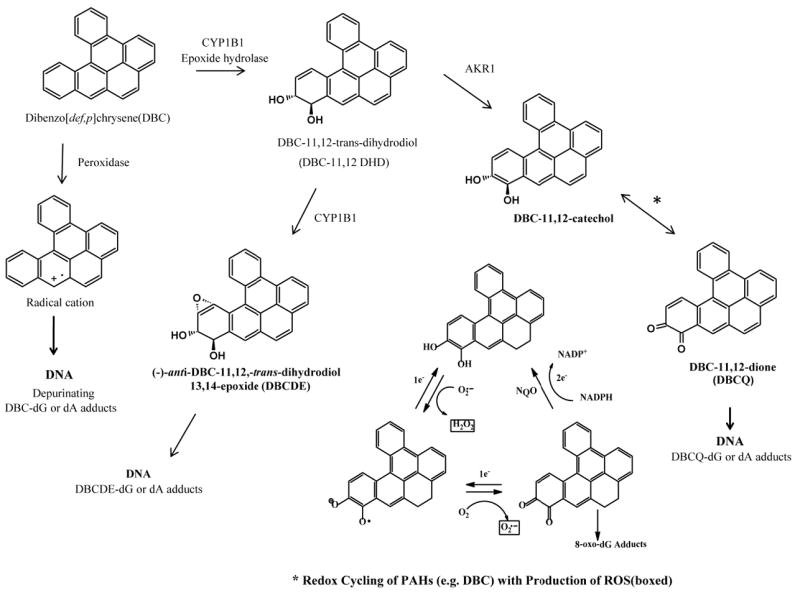Fig. 1.

Metabolic pathways for bioactivation of PAHs using the fjord containing dibenzo[def,p]chrysene as an example. From left to right, the peroxidase pathway resulting in radical cations which may be capable of forming DNA adducts. The most well characterized P450 CYP dependent epoxygenation hydrolysis by epoxide hydrolase shows one of two (+) and (-) trans- DBC-11,12 DHD products followed by epoxygenation to one of four DBCDE products capable of adducting to macromolecules such as DNA. Also shown is the AKR pathway producing semi-quinones and quinones. *These reversible reactions can produce radical oxygen species resulting in additional oxidative stress.
